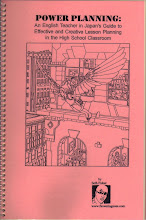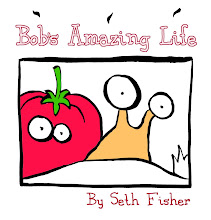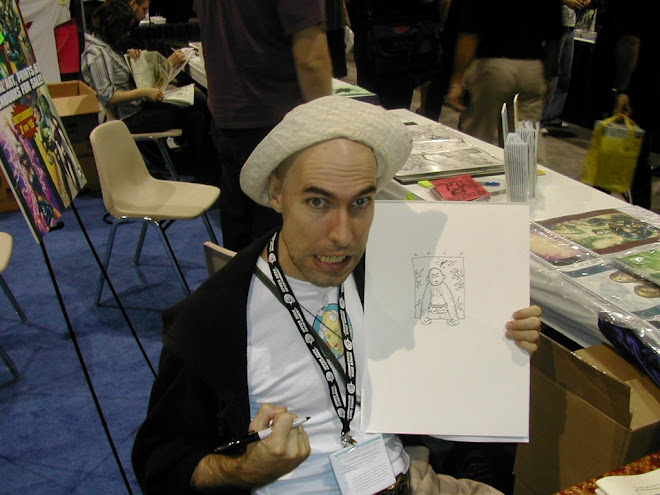

This is from a letter that Seth wrote to someone who had asked him for advice. (Thank you Steven.)
"Big Hint: Create location indicators to make panel transitions smooth. I wish I had a picture to show you.
"Imagine a checkerboard tiled wall with small circles all over the white tiles. Very distinctive. You shoot straight on with your character right in front of it. Now you have an identifiable SCALE and PATTERN that you can use again. Suppose a giant slug (it happens) crawls across the wall in the next frame. Normally you would have no way of noticing that the slug was huge without a scale cue like a hand or a salt shaker in the foreground, but you have it tagged now because you established it before. Also if you shoot that wall again anytime in the future, people will automatically remember that location and know where you are again, without you having to do an establishing shot again. You can use ANYTHING to give the reader a reference point that you can keep coming back to.... This is one of the most useful techniques around and even I don't use it enough. You take item A and item B and instead of relating them to each other, you relate each one visually to a new item C that you create. Really pulls things together."
I couldn't find an area where Seth did exactly what he was talking about above, but in the pages above, and in many other pictures of monsters, he used buildings and windows to show how big the monster was. He also used patterns on walls, floors, and ceilings to locate people in space. These two images show the same building from different angles, one from about second story level, which lets us see what the creature looks like, the other from the ground, which shows us the reactions of our heroes. Not only do we get the scale of the monster, but we also realize that we are looking at the same building under its feet, with its distinctive arched windows.
"Big Hint: Create location indicators to make panel transitions smooth. I wish I had a picture to show you.
"Imagine a checkerboard tiled wall with small circles all over the white tiles. Very distinctive. You shoot straight on with your character right in front of it. Now you have an identifiable SCALE and PATTERN that you can use again. Suppose a giant slug (it happens) crawls across the wall in the next frame. Normally you would have no way of noticing that the slug was huge without a scale cue like a hand or a salt shaker in the foreground, but you have it tagged now because you established it before. Also if you shoot that wall again anytime in the future, people will automatically remember that location and know where you are again, without you having to do an establishing shot again. You can use ANYTHING to give the reader a reference point that you can keep coming back to.... This is one of the most useful techniques around and even I don't use it enough. You take item A and item B and instead of relating them to each other, you relate each one visually to a new item C that you create. Really pulls things together."
I couldn't find an area where Seth did exactly what he was talking about above, but in the pages above, and in many other pictures of monsters, he used buildings and windows to show how big the monster was. He also used patterns on walls, floors, and ceilings to locate people in space. These two images show the same building from different angles, one from about second story level, which lets us see what the creature looks like, the other from the ground, which shows us the reactions of our heroes. Not only do we get the scale of the monster, but we also realize that we are looking at the same building under its feet, with its distinctive arched windows.





No comments:
Post a Comment